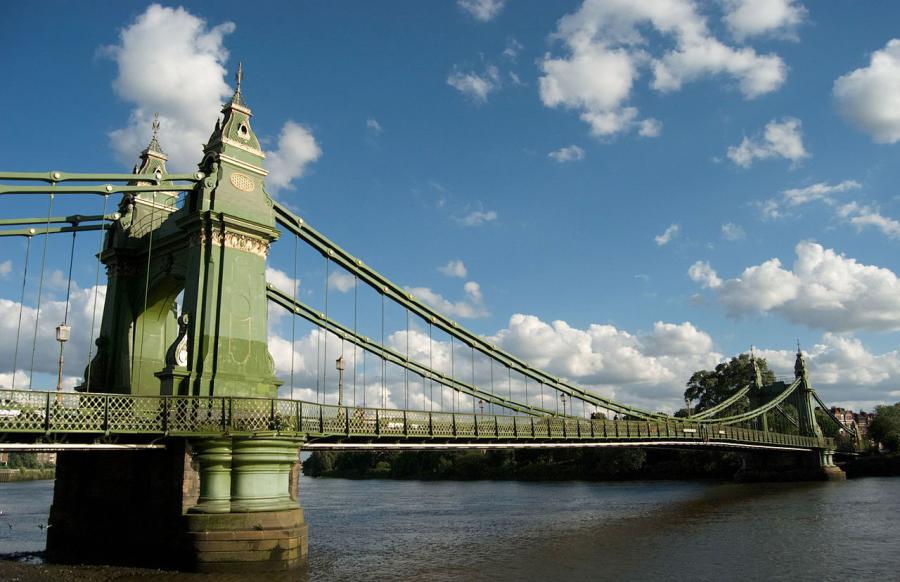
All you need to know and the latest updates
Hammersmith Bridge, built in 1887, is one of the world's oldest suspension bridges which is why it is also one of Britain's most expensive to repair.
It is a Grade II* listed structure made out of wood and wrought iron with the suspension held in place by cast iron pedestals. It is part of Britain's engineering heritage and a national landmark.
The bridge was fully closed in 2020 on public safety grounds, following the identification of micro-fractures in the 138-year-old structure. It was reopened in 2021, to pedestrians, cyclists and river traffic following extensive investigations and the introduction of a pioneering temperature control monitoring system.
The main carriageway reopened to pedestrians, cyclists, wheelchair and e-scooter users in April 2025.
Hammersmith & Fulham Council (H&F) and the Department for Transport (DfT) are currently considering a range of options and engineering solutions for the long-term future of the bridge.
On this page
- Hammersmith Bridge main carriageway open for pedestrians and cyclists
- Redecking complete
- Stabilisation work complete
- Hanger repair work
- Phase 1 - The stabilisation programme
- Phase 2 - Strengthening and restoration programme
- Hammersmith Bridge Restoration Project launched
- Council approves £3.5m for stabilisation works
- July 2021 re-opening
- Proposal for a temporary double-decker crossing
- The closure and re-opening of Hammersmith Bridge
- How did this happen?
- The Hammersmith Bridge Taskforce
- Funding the repair and restoration
- Q&As – all you need to know
- Videos
- Mott MacDonald report documents
- Press and media coverage
- Letters
Hammersmith Bridge main carriageway open for pedestrians and cyclists
Hammersmith Bridge's main carriageway has reopened with new decking after a £2.9 million transformation to improve the experience for pedestrians, cyclists and e-scooter users.
There are now three separate lanes – one dedicated for cyclists traveling north, another for cyclists traveling south and a third two-way pedestrian path. The outer footways will also remain open to pedestrians only.
E-cargo bikes, which fit between the newly-installed 1.2m wide anti-terror barges, are also being trialled on the bridge to shuttle older and Disabled residents as well as young children. They will use the cycle lanes.
The new decking has been funded by a £2.9m grant from the Department for Transport (DfT). The DfT has also granted Hammersmith & Fulham Council £4.7m for works to support the bridge hangers which connect the deck to the suspension chains.
The reopening of the main carriageway comes after our expert engineers successfully stabilised the Grade II*-listed Victorian bridge.
Hammersmith & Fulham Council has spent a total of £48million restoring and keeping Hammersmith Bridge safe since August 2020 – when it was fully closed on safety grounds.
Redecking complete
Our engineers removed more than 1,000 deteriorated deck and footway panels for the main carriageway. Watch the first stage of redecking on YouTube.
Engineers replaced all the worn wooden deck boards, repaired some bulk timbers that support the decking, resurfaced the carriageway and walkways and installed anti-terror safety measures on the historic bridge.
H&F has trialled e-mobility options to shuttle residents across the bridge, notably older and Disabled people, subject to a 1.5-tonne vehicle weight limit imposed by safety experts. See the photos here.
We'll continue to monitor the number of pedestrians and cyclists safely crossing the bridge at one time to prevent overloading of the historic structure.
Stabilisation work complete
Our expert engineers have successfully stabilised the 138-year-old Hammersmith Bridge.
The unprecedented works combined cutting-edge engineering with careful preservation of one of the world's oldest suspension bridges.
It was completed in the following stages:
- World-leading engineers strengthened all four corner cast-iron pedestals with fibre-reinforced concrete, after meticulously planning and trialling off-site using a replica pedestal.
- Customised steel frameworks were then installed to support the historic structure during the jacking operations. To make the frames, the steel was imported in 29 giant sheets and then cut into 1,220 bespoke pieces.
- The bridge was carefully lifted off its original Victorian bearings using a hydraulic jacking system. This allowed engineers to replace the seized bearings with modern rubber ones, ensuring the bridge can now respond safely to temperature changes and movement.
The stabilisation works became necessary after an investigation commissioned by H&F revealed fractures in the cast-iron pedestals – critical components that hold the suspension system in place. These fractures placed the bridge at risk of catastrophic collapse.
This was the first phase of the complex and unprecedented work required to fully restore the historic bridge. However, the bridge remains "sub-standard" and will still require monitoring and significant maintenance to keep it open.
Hanger repair work
Engineers are reinforcing the old and overstressed hangers on Hammersmith Bridge.
The 172 hangers – poles that connect the bridge deck to its suspension chains – run along both sides of the historic suspension bridge. These structures connect to bearing joints which allow the bridge's deck to flex and move.
Steel rods have been temporarily installed to alleviate the pressure on the hangers, prior to the permanent repair work which will see the deck-end bearings replaced. Our team is also regularly greasing the joints to support the movement of the suspension bridge.
Phase 1 - The stabilisation programme
H&F's world-leading engineers began work on-site on 28 February 2022 on the Phase 1 stabilisation part of the Hammersmith Bridge Restoration Project.
These works, developed by engineers at Mott MacDonald, limited the need for temporary closures for pedestrians, cyclists and river traffic, and therefore support residents on both sides of the river.
The stabilisation works were delayed because of damage caused to the bridge's gantry by a boat carrying football fans and the requirement for some refabricated steel plates for the pedestals. Works have now been completed.
Fixing the pedestals
The first step was to stabilise the micro-fractures in the cast iron pedestals which bear the bridge's weight. Engineers created a replica of a fractured pedestal which was tested off-site.
The casings of the four corner cast-iron pedestals were then removed and the pedestals were filled with fibre-reinforced concrete. This work was undertaken by our contractor FM Conway and their sub-contractors, Freyssinet Ltd and Taziker Industrial Ltd.
Replacing the bearings
The next step was to replace the Victorian bearings, which had seized, with new rubber bearings. This involved the use of hydraulic jacks to lift the bridge off its pedestals and allow the bearings to be replaced.
In May 2023, engineers installed four temporary and four permanent steel frames for each pedestal. These supported the bridge when the saddles were jacked to protect vital and historic parts of the structure.
Foundation inspections
Our experts have drilled 12 holes around the bridge's 200-year-old foundations in the Thames and on the riverbank. The current bridge was built on the foundations of the previous 1824 bridge, originally designed for just horses and carriages.
Engineers drilled as deep as 50 metres to gather essential information about the historic pier foundations. They've concluded the foundations are strong enough to support the proposed truss bridge.
Phase 2 - Strengthening and restoration programme
The Phase 2 strengthening and restoration programme will see the bridge fully reopened to cars, buses and motorcyclists.
Pioneering truss proposal
H&F commissioned Foster + Partners and COWI to develop pioneering plans to install a temporary double-decker truss within the existing Hammersmith Bridge structure.
These would see the bridge reopen to motor vehicles earlier than under the previous Transport for London (TfL) plan while allowing restoration work to the historic bridge to take place off-site. Pedestrians, cyclists and river traffic would also continue to cross or use the river.
Planning consent
The proposals require both planning permission and listed building consent from H&F and Richmond-Upon-Thames Council. If approved, the work is expected to be carried out by a third-party contractor chosen by H&F and the truss proposal will be used as a reference design.
Engineers undertaken geotechnical investigations to the bridge's 200-year-old pier foundations as part of the preparatory work for the contract procurement programme.
Toll or road user charge
In an unprecedented move, the Government has instructed H&F to pay a one-third share of the total repair bill which traditionally would be paid largely by the DfT or regional government. H&F has made it clear it can only fund its share of the capital costs and ongoing maintenance through a toll or road user charge.
A toll or road user charge would ensure that those who benefit from directly using the bridge, i.e. motorists, pay for its repair and continued operation.
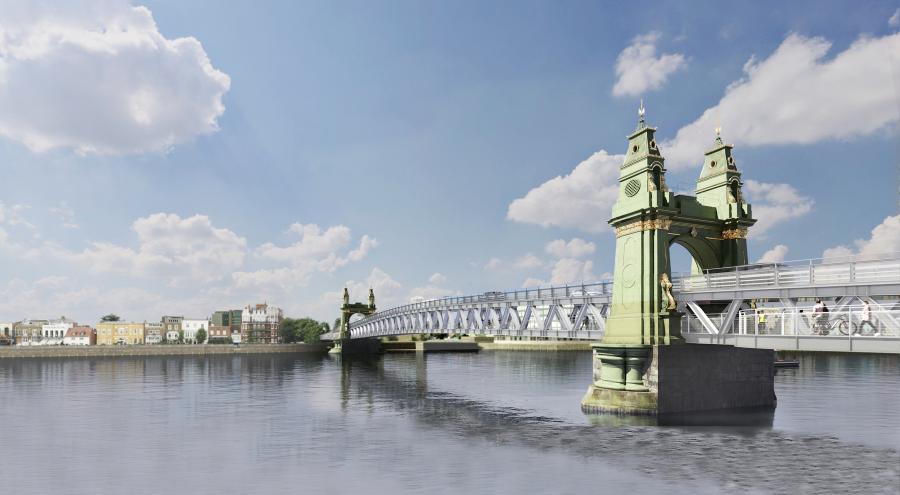
Hammersmith Bridge Restoration Project launched
The Hammersmith Bridge Restoration Project was officially launched on 22 March 2022 by:
- H&F Leader Cllr Stephen Cowan
- Baroness Vere, Parliamentary Under-Secretary of State at the Department for Transport (DfT)
- Representatives from Transport for London (TfL)
- Cllr Gareth Roberts, Leader of Richmond Council.
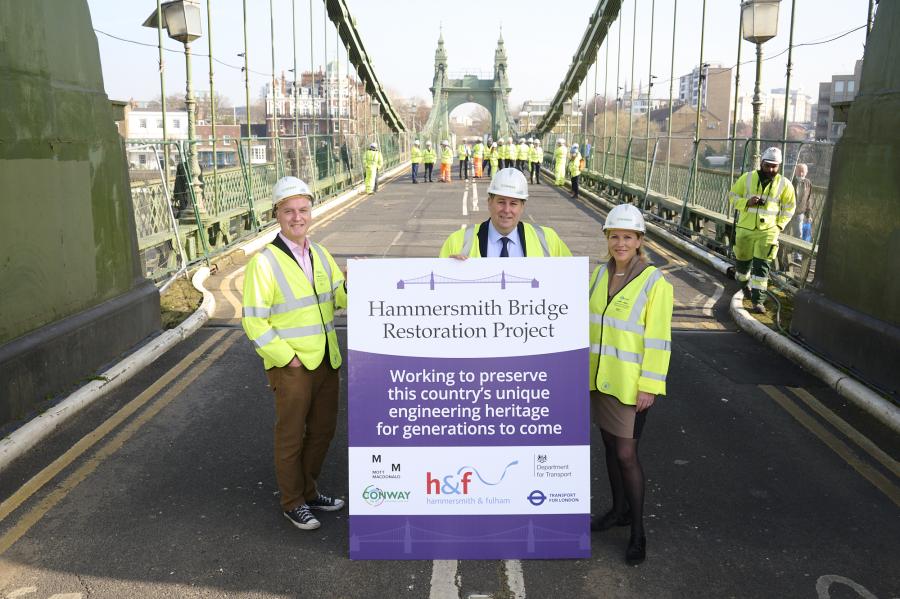
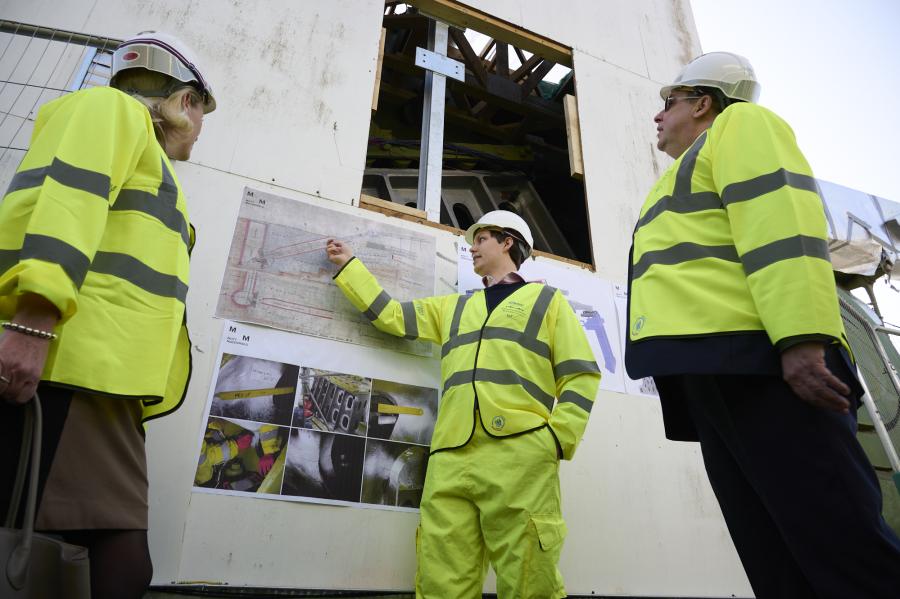
Council approves £3.5m for Phase 2 restoration
On 7 March 2022, H&F Council approved a further capital spend of £3.5million to progress Phase 2 works to strengthen and restore Hammersmith Bridge and reopen it to motor vehicles. These works include concept design, traffic modelling, crowd loading and geotechnical surveys.
To expedite the full programme at speed, H&F again decided to fund the works upfront rather than wait for the Department for Transport (DfT) and Transport for London (TfL) to sign-off on their governance processes. It is anticipated that H&F will be subsequently reimbursed by DfT and TfL for their one-third shares of the cost.
The work includes the essential concept design on the alternative proposal developed by architects and engineers Foster + Partners and specialist bridge engineers COWI.
This project, which is being considered alongside the existing TfL plan, could see a temporary double-decker crossing installed using the existing bridge foundations. It may see the bridge opening to motor vehicles and buses two years earlier than proposed previously and at a lower cost to taxpayers.
The re-opening in July 2021
The bridge reopened to pedestrians, cyclists and river traffic on 17 July 2021 following the expert advice from the CCSO safety engineers.
Announcing the move, H&F Leader Cllr Stephen Cowan said: "The potential for catastrophic collapse of this 134-year-old suspension structure was very real. We've employed the best engineers from around the world who advised we had to close the bridge last summer. We will always put the safety of the public first.
"Ever since, I have been determined to re-open the bridge as soon as it was safely possible. The introduction of the temperature control system, and the results of our extensive engineering investigations, now mean that the bridge can be opened for use by pedestrians, cyclists and to river traffic."
- Press release: Hammersmith Bridge re-opens to pedestrians and cyclists (17 July 2021)
- Briefing note to H&F Council from Board for the Case for the Continued Safe Operation of Hammersmith Bridge, July 2021
VIDEO: Cllr Stephen Cowan reflects on the reopening of Hammersmith Bridge
If this video doesn't display, please enable statistics cookies or watch it on YouTube: Cllr Stephen Cowan reflects on the reopening of Hammersmith Bridge.
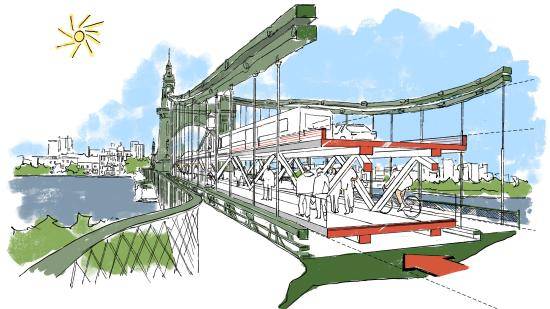
H&F, Foster + Partners/COWI propose temporary double-decker crossing
An innovative proposal from world-leading engineers could see Hammersmith Bridge re-opened three years earlier than planned, with a cost saving of £40m.
The double-decker solution from globally renowned architects and engineers Foster + Partners and specialist bridge engineers COWI would see a temporary truss laid over the existing carriageway allowing cars and buses to cross.
-
Read more on the proposed temporary double-decker crossing plans
The plan was developed after the bridge's full closure in August 2020. H&F Leader Cllr Stephen Cowan approached the private sector to seek radical solutions. In response, property developer Sir John Ritblat asked Foster + Partners and COWI to develop proposals.
The temporary truss would enable the current structure to be renovated off-site, potentially providing a quicker and more cost-effective full restoration solution.
A detailed feasibility study commissioned by H&F has now confirmed that the existing foundations could support the extra load of the temporary truss and that the significant savings could be made.
Elements of the bridge that need repair, including the decking, would be lifted away using the temporary bridge as a works platform and transported by barges to an off-site facility for safe repair and restoration.
Historic England, which has been already been involved in discussions about the plan, will need to approve the works which enable the bridge to be restored to its original Victorian splendour with fewer constraints.
The closure and re-opening of Hammersmith Bridge
Before the bridge was partially reopened on 17 July 2021, the 134-year-old Grade II*-listed Hammersmith Bridge had been fully closed from 13 August 2020 to pedestrians, cyclists and river traffic for safety reasons.
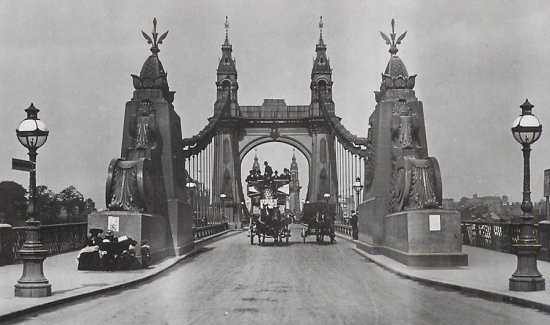
In the preceding hours new sensors positioned throughout the suspension structure alerted engineers to a rapid and sudden increase in the size of dangerous micro-fractures in the cast iron pedestals that hold the suspension system in place.
The heatwave was the most likely cause. The micro-fractures were first discovered in 2019 using the latest technology. Cast iron is brittle and can shatter. The micro-fractures therefore posed the serious risk that the bridge could suddenly, and with little warning, collapse into the Thames.
Up until 10 April 2019, Hammersmith Bridge carried 22,000 motor vehicles a day. Up until 13 August 2020, hundreds of boats travelled underneath it and 16,000 pedestrians and cyclists travelled across it each day.
How did this happen?
Engineers employed by Hammersmith & Fulham Council discovered that the microfractures are a consequence of decades of unchecked corrosion that is riddled throughout the suspension structure.
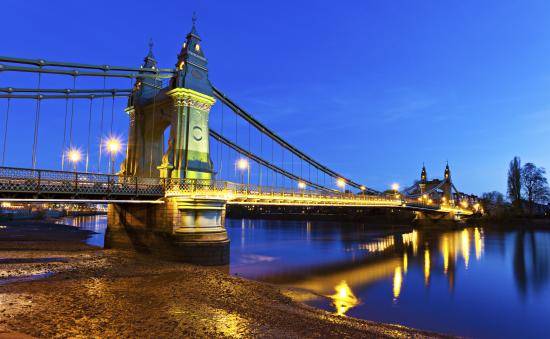
These very serious problems only began to be discovered from 2015 onwards because in 2014, the current administration commissioned a Comprehensive Structural Integrity Review – the first in the bridge's history. Prior to that, only £250,000 had been spent touching up the decking and other minor works.
The council and Transport for London employed some of the best engineers in the world and tasked them with fully diagnosing all the problems with Hammersmith Bridge and developing a plan to make it safe and fit for purpose. The engineers have huge experience including working on the Golden Gate Bridge in California and on oil rigs in the North Sea.
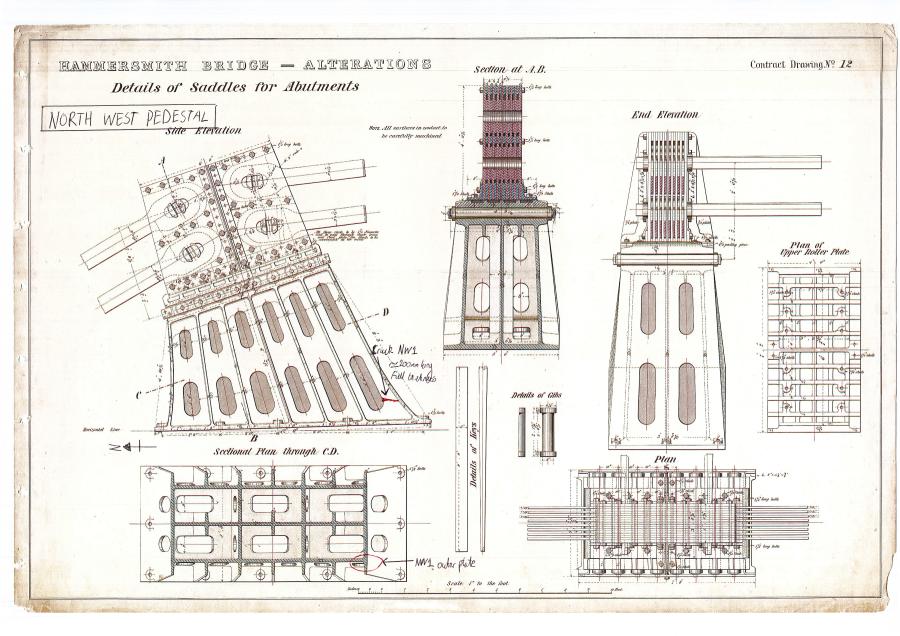
The Hammersmith Bridge Taskforce
Following the letter to the Prime Minister, on 9 September 2020 the Secretary of State for Transport Grant Shapps announced he was setting up a government taskforce, which would take over the project and work up solutions. Members of the taskforce include Cllr Cowan, the Deputy London Mayor for Transport for London, the CEO of the Port of London Authority, the Leader of Richmond Council and respective officials. It was chaired by Baroness Vere of Norbiton who is a Parliamentary Under Secretary of State at the Department for Transport. The taskforce was paused in November 2021 and reconvened 30 January 2025.
-
Read Hammersmith Bridge Taskforce updates from the GOV.UK website
Links in this section open in a new window or tab.
Joint statements on progress made by the Taskforce at their:
- Meeting on Thursday 25 November 2021
- Meeting on Tuesday 20 July 2021
- Meeting on Thursday 3 June 2021
- Meeting on Thursday 29 April 2021
- Meeting on Thursday 25 March 2021
- Meeting on Thursday 25 February 2021
- Meeting on Thursday 4 February 2021
- Meeting on Thursday 14 January 2021
- Meeting on Thursday 17 December 2020
- Meeting on Thursday 10 December 2020
- Meeting on Friday 27 November 2020
- Meeting on Friday 13 November 2020
- Meeting on Thursday 29 October 2020
- Meeting on Thursday 15 October 2020
- Meeting on Thursday 8 October 2020
- Meeting on Thursday 1 October 2020
Funding the repair and restoration
On 19 February 2021, in response to a request from the Secretary of State for Transport, H&F submitted an outline financial plan to the Department for Transport (DfT). The 108-page report detailed funding and future governance options for Hammersmith Bridge, including toll and road charging proposals, to provide the best value for local and national taxpayers.
On 1 June 2021, it was announced by the Government that, as part of its latest funding and financing package for Transport for London (TfL), the DfT, TfL and H&F hope to develop a Memorandum of Understanding in relation to the funding of the project. Each party would agree to pay a share of the cost. Repair costs are to be led by H&F and TfL, with the Government contributing one-third of the costs.
At the Government Taskforce meeting of 3 June 2021, it was noted that the advice of engineers commissioned by H&F and TfL is still being developed, and agreed it is important to conclude which option will determine the way forward by the end of the month. This work is ongoing.
The Taskforce was informed that no borough council has ever paid 33 per cent of repair works for any London bridges. H&F had already committed £8.6m. Historically, TfL has paid 85 per cent for repair works on London bridges owned by borough councils.
As Hammersmith Bridge is exceptional in being one of the world's oldest mechanical suspension bridges and one of the most expensive bridges to repair and maintain in the United Kingdom, H&F questioned why any further contribution should be required in such circumstances – let alone a baseless and unprecedented 33 per cent.
Q&As – all you need to know
Here are some facts that will explain what has happened with the 133-year-old suspension bridge, why major works are necessary and what H&F is doing to mitigate the impact of the closure.
All links in the following Q&As open in a new window or tab.
-
Why did the bridge close for pedestrians, cyclists and river traffic in August 2020?
On safety grounds. On 13 August 2020 new sensors positioned throughout the bridge alerted engineers to a rapid and sudden increase in the size of dangerous micro-fractures in the cast iron pedestals that hold the 19th century suspension structure in place.
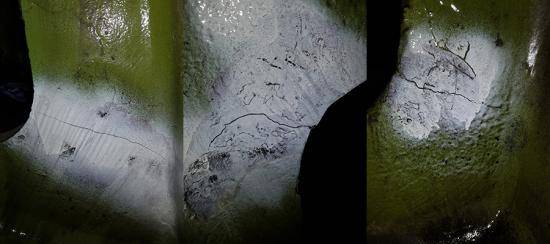
Micro-factures in the north west and south west pedestals under Hammersmith Bridge Cast iron is brittle and can shatter and the expansion of the micro-fractures posed the serious risk that the bridge could suddenly and with little warning collapse, so on urgent safety grounds it had to be closed to all users, including river traffic.
-
Why did the bridge close to vehicles in 2019?
In April 2019, hairline micro-fractures in the bridge's pedestals were first discovered by the council's specialist engineers using the latest technology, prompting the council to close the bridge to vehicles on safety grounds.
The engineers discovered that the microfractures are a consequence of decades of unchecked corrosion that is riddled throughout the suspension structure. These very serious problems were only revealed because, in 2014, the administration commissioned a Comprehensive Structural Integrity Review – the first in the bridge's history.
-
What is the Comprehensive Structural Integrity Review?
The current administration commissioned a Comprehensive Structural Integrity Review (CSIR) of the bridge in 2014, the first in its history, with the objective of understanding if the bridge was structurally sound. As part of the review, the council hired a team of world class specialist engineers, started weekly safety inspections and installed hi-tech sensors all over the bridge to check if stresses were causing structural damage.
The review, likened to peeling back an onion, revealed elements of the bridge that hadn't been uncovered since it was built. These investigations revealed the extent of structural problems with the bridge – its natural and necessary flexibility had become compromised, causing critical fractures in the pedestals that anchor the bridge into the ground.
Based on the engineer's reports and the findings of the CSIR, a comprehensive and enduring repair plan has been drawn up and is ready for implementation, pending funding.
-
Hammersmith & Fulham Council has spent a total of £48million restoring and keeping Hammersmith Bridge safe since August 2020 – when it was fully closed on safety grounds.
The new decking has been funded by a £2.9m grant from the Department for Transport (DfT). The DfT has also granted Hammersmith & Fulham Council £4.7m for works to support the bridge hangers which connect the deck to the suspension chains.
Hammersmith Bridge is a strategically important river crossing and a main London transport artery. The Leaders of Hammersmith & Fulham and Richmond Councils have asked for the government's financial support.
Only the government and the private sector has the sort of sums needed. The taskforce is exploring funding options. The council will not be asking residents of H&F to contribute to the cost.
-
Some have suggested the repair of the bridge could be paid for using tolls - is this true?
We're not ruling out options including the use of tolls on the bridge by drivers passing through, but residents of Hammersmith & Fulham wouldn't be asked to pay a penny to use the bridge.
-
Could H&F use its reserves to pay for the bridge?
No. The reserves are critical to ensuring that the council is in a position at all times to maintain its hundreds of statutory duties and services to residents including protecting children at risk of abuse, providing care to the elderly and disabled, maintaining roads and parks, collecting refuse, tackling homelessness and keeping libraries open.
Our general fund reserves currently total £80m. In addition, a reserves balance of £50m is ring-fenced for the housing revenue account and £10m is held for schools. Our reserves are below average among London councils.
As a financially efficient council, we will not imperil our reserves against auditors' advice. We have a duty to residents to keep the council on a firm financial footing.
-
Doesn't the council lend out millions in loans?
We work hard in H&F to effectively manage our finances. This includes short-term, low-risk lending which generates funds to re-invest in frontline services. Our financial efficiency has allowed us to keep council tax low while improving services for residents.
An inaccurate news story in May 2020 claimed that H&F was lending "lending half a billion" to other local authorities, during 2018/19. This story, based on an aggregate of loans without taking into account their return, was false and has since been corrected.
The total sum available for the council to invest includes not just reserves but other cash balances such as capital receipts and specific grant balances.
At the end of 2019, we had £154.5m loaned out to other local authorities which included a £90m capital receipt from the previous administration's Conditional Land Sale Agreement with a property developer for the sale of 750 council homes at the West Kensington and Gibbs Green estates. This was money held by the council that could not be spent on other areas until the estates were fully handed over to the developers. Ultimately, the money was used to buy back the estates following the successful campaign to protect the homes of residents from speculators.
As of December 2020, we have £17m loans out with local authorities, a very small amount compared to many other local authorities.
-
What is the purpose of the Hammersmith Bridge Taskforce?
Following council requests for the government's urgent constructive engagement and financial support, on 9 September 2020, the government announced a Hammersmith Bridge Taskforce which would take over the project and work up solutions. The taskforce's remit includes reviewing Hammersmith & Fulham Council's proposed stabilisation and repair scheme and exploring funding options for the repair of the bridge and for temporary solutions. The council welcomes the government's engagement. Read updates from the taskforce on this page.
The taskforce was paused in November 2021 and reconvened 30 January 2025.
-
What about building a temporary road bridge?
Contrary to misleading claims, a temporary road bridge could not be built for £7m in three months. This proposal has been discarded by Transport for London engineers on the grounds of cost, timescale and feasibility.
The required permission for a temporary bridge from the Port of London Authority is also contingent on all the funding for the complete repair of the bridge being already in place before work on a temporary bridge could start.
Without the financing in place for the permanent repair, the option of any kind of temporary bridge is not available.
-
Why not just take it down and build a new one?
The bridge is protected by Historic England. It is a Grade II*-listed heritage asset meaning it is a 'particularly important' national structure of 'more than special interest'. Despite its problems, Hammersmith Bridge is a beautiful Victorian structure and a unique part of Britain's pioneer engineering heritage. Furthermore, the cost of building a new bridge would be similar to the repair of the current bridge.
-
What else is being done to mitigate the disruption?
Hammersmith & Fulham Council is working closely and constructively with the MPs for Hammersmith, Richmond Park, Putney, and Brentford and Isleworth, with TfL, the Mayor of London, with Richmond Council, the PLA and the government's Taskforce to coordinate our joint mitigation efforts.
At our request, TfL has reorganised buses in the area to ensure that residents still have a connected public transport network while the bridge remains closed. It has also enhanced its Dial-a-Ride services to provide another option for people with impaired mobility whose journeys might have been affected by the closure.
TfL has added a series of alternative bus routes for Hammersmith Bridge:
- Extra services on Route 533 (Hammersmith Bus Station - Lonsdale Road), increasing the frequency Monday to Friday from two to four buses an hour.
- Extra services on Route 378 (Mortlake Bus Station – Putney Bridge Station), increasing the frequency Monday to Saturday during the day from five to eight buses per hour.
TfL has extended its Dial-a-Ride scheme to help residents with mobility needs who live near Hammersmith Bridge. For more details, read our Dial-a-Ride news story.If you have any questions about the repair works, please call TfL on 0343 222 1234. (Charges apply - calls from landlines are typically charged between 2p and 10p per minute and calls from mobiles typically cost between 10p and 40p per minute. Connection charges may apply.)
-
What's so special about Hammersmith Bridge?
Hammersmith Bridge was the first suspension bridge built over the Thames. Designed by the noted 19th century civil engineer, Sir Joseph Bazalgette, it was built in 1887.
Opened by the Prince of Wales in June 1887, Hammersmith Bridge is a complex feat of Victorian engineering built using a combination of cast iron, wrought iron and 999 individual wooden plates. It features structural copulas and seven crests. It's also London's lowest bridge, with a water clearance of just 12 feet at high tide, and one of the capital's weakest bridges, which is why weight restrictions have been in place since 2015.
Hammersmith Bridge has been bombed three times – by the IRA in 1939, by the Provisional IRA in 1996, and by the Real IRA in 2000.
The bridge is one of London's most iconic structures and features in many films.
-
Who is responsible for fixing the bridge?
The bridge is a Grade II*-listed heritage asset meaning it is a 'particularly important' national structure of 'more than special interest'.
Ownership of the bridge was passed to Hammersmith & Fulham Council in 1985 after the abolition of the GLC. When the current administration launched its Comprehensive Structural Integrity Review in 2014, it revealed that the bridge had been poorly maintained for decades. The Council is currently paying £2.7m a year simply to stop additional and dangerous deterioration.
Hammersmith Bridge is London icon and a vital part of London's strategic transport system and major North South arterial route, which is why Transport for London (TfL) has been project managing the restoration of the bridge since 2015.
-
The bridge was built for horses, carts and penny farthings. Until 2015, when the council limited the number of buses, the bridge was used by 22,000 cars and 1,800 buses every day.
Up until 13 August 2020, hundreds of boats travelled underneath and 16,000 pedestrians and cyclists travelled across it each day including more than 1,000 school children from several London boroughs.
The bridge is a main artery connecting the north and south sides of the Thames and a vital river crossing for residents in neighbouring boroughs on both sides of the Thames, and for London as a whole.
-
Will the bridge look the same once it's reopened?
The bridge will be fully restored to its former glory and, once restored, will look better than it does today.
As well as repairing its structural issues, its road surface have been renovated to ensure the surface is smooth and fit for purpose. In addition, the original electric lights have been replaced with LED light bulbs. Although the LED light bulbs will look the same they will cut energy use by 50 per cent.
-
What about emergency vehicles?
There have been emergency service contingency plans in place long before the bridge was closed. Hammersmith & Fulham Council is in regular dialogue with all emergency service providers.
-
What traffic diversions are in place?
Diversions are in place for motorists and the bus routes which use the bridge - find out more about Hammersmith Bridge diversions on the TfL website.
Videos
-
Watch our videos about Hammersmith Bridge
Hammersmith Bridge news coverage (1982)
Video of Danny Baker speaking to local residents about the bridge closure.
Hammersmith Bridge redecking (14 October 2024)
Floss Willcocks, an assistant engineer at our contractor COWI, explains the resurfacing work.
Hammersmith Bridge (1970 to 1975)
Archive footage of Hammersmith Bridge with an unfamiliar paint colour and significantly less traffic. Video courtesy of British Pathe.
Hammersmith Bridge time-lapse repairs 2019
Video footage from a north facing CCTV camera on Hammersmith Bridge taken between 22 November and 20 December 2019.
Returning Hammersmith Bridge to its Victorian splendour
Cllr Stephen Cowan talks to engineers working on restoring Hammersmith Bridge. This video contains headcam footage captured while engineers worked inside the bridge pedestals, and time-lapse footage illustrating the volume of traffic crossing the bridge pre-closure.
Discussion with David Maxwell-Scott
Cllr Stephen Cowan answers questions from passing cyclist David Maxwell-Scott about the future of the bridge.
Hammersmith Bridge Public Meeting: Session Two
Video of a public meeting hosted by Richmond Council.
Our plans for Hammersmith Bridge
A two-minute animation summarising the reasons for this closure and what we are doing to repair the bridge.
Mott MacDonald report documents
- Report by Mott MacDonald on north east pedestal (executive summary) (pdf 32KB)
- Briefing paper on Mott MacDonald report from CCSO (pdf 446KB)
- Covering letter to H&F from CCSO
- Review of DfT Taskforce reports from CCSO Board (pdf 103KB)
Press and media coverage
- This could be the most beautiful car-free bridge in the world (Momentum Mag, June 2025)
- Government rules out plan to demolish Hammersmith Bridge (Building Design, April 2025)
- Driving cars in London is a totally pointless activity and I hate it, says Top Gear presenter James May (The Standard, March 2025)
- Council brushes off eye-catching proposals for Hammersmith Bridge as 'another press stunt' (South London News, February 2025)
- Hammersmith Bridge Taskforce to reopen the key link across the Thames is being reconvened (The Standard, November 2024)
- £2.9 million government funding to enable cyclists to use Hammersmith Bridge (GOV.UK, April 2024)
- Hammersmith Bridge: 'At least five more years until it reopens', Londoners told on 5th anniversary of closure (Evening Standard, 11 April 2024)
- West London council leader says Hammersmith Bridge repairs 'in Sadiq Khan and government's hands' (MyLondon, 7 June 2023)
- Hammersmith Bridge project team eyes challenges ahead as stabilisation nears completion (New Civil Engineer, 24 March 2023)
- Boat Race focuses attention on Hammersmith Bridge (The Chiswick Calendar, 27 March 2023)
- Further planning details revealed for cars on Hammersmith Bridge (Evening Standard, 27 March 2023)
- 28 firms express interest in Hammersmith bridge job (New Civil Engineer, 29 March 2022)
- Hammersmith Bridge | Double-decker solution wins funding for further development (New Civil Engineer, 8 March 2022)
- New Civil Engineer highlights £24m saving with H&F commissioned plan (New Civil Engineer, 8 February 2022)
- Hammersmith Bridge – Motts alternative stabilisation plan approved after slashing millions off project cost (New Civil Engineer, 16 August 2021)
- Council cuts Hammersmith Bridge repair costs by 80% after swapping Pell Frischmann for Mott MacDonald (Building, 16 August 2021)
- Hammersmith Bridge: DfT funding plan 'shows contempt for Londoners' (BBC, 2 June 2021)
- H&F Leader Stephen Cowan interviewed on BBC Radio London on financing the bridge and the council's plans (BBC, 2 June 2021)
- Evening Standard editorial calls on the government to cover the full cost of repair (ES, 1 June 2021)
- Engineering plan behind Hammersmith Bridge's double-decker solution (New Civil Engineer 7 April 2021)
- Foster plan for Hammersmith Bridge 'could slash £40m from repair bill' (Building Design, 22 March 2021)
- London's bridges are falling down: how politics has failed the capital's crossings (The Guardian, 14 February 2021)
- Hammersmith Bridge: Council 'must pay £64m' bridge bill (BBC News, 15 December 2020)
- Land of Broken Bridges: Nearly HALF of England's 9,000 motorway and A-road crossings are in 'poor' state and in dire need of repair, official data shows (Mail Online, 3 December 2020)
- The Times view on moving the Oxford v Cambridge boat race: Bridge of Shame (The Times, 27 November 2020) (pdf 259KB)
- Hammersmith Bridge – a handy timeline (On London, 16 November 2020)
- London's bridges 'are the capital's embarrassment' (BBC London News, 14 October 2020)
- Hammersmith Bridge Taskforce backs temporary ferry crossing (New Civil Engineer, 5 October 2020)
- Report on the Hammersmith Bridge Taskforce (BBC One Politics Show, 27 September 2020)
- Hitachi failed its nuclear test. If only it had the vanity of HS2 (The Guardian, 18 September 2020, bridge mentioned in article)
- London's bridges really are falling down (New York Times, 7 September 2020)
- Interview with Cllr Stephen Cowan about the full bridge closure (BBC Radio London, 20 August 2020)
- Letter from Cllr Stephen Cowan 'Hammersmith Bridge will reopen' (Evening Standard Comment, 31 July 2019, second comment on page)
Letters
- Letter to residents and businesses from Ian Hawthorn (8 February 2022) (pdf 66KB)
- Letter to Baroness Vere from Cllr Stephen Cowan (25 August 2021) (pdf 117KB)
- Letter to Baroness Vere from Cllr Stephen Cowan (13 May 2021) (pdf 116KB)
- Letter to Rt Hon Grant Shapps MP from Cllr Stephen Cowan (8 March 2021) (pdf 664KB)
- Letter to HammersmithBridgeSOS from H&F Council (18 April 2021) (pdf 180KB)
- Letter to local correspondents from Cllr Stephen Cowan (February 2021) (pdf 674KB)
- Letter from Cllr Stephen Cowan to Baroness Vere of Norbirton (1 Feb 2021) (pdf 687KB)
- Letter from Cllr Stephen Cowan to Baroness Vere of Norbirton (13 Jan 2021) (715KB)
- Letter to Baroness Vere of Norbiton from Cllr Stephen Cowan (28 October 2020) (pdf 765KB)
- Letter to Cllr Stephen Cowan from Baroness Vere of Norbiton (27 October 2020) (pdf 430KB)
- Letter to residents about the full bridge closure (10 September 2020) (pdf 655KB)
- Letter to the Prime Minister from Hammersmith & Fulham and Richmond Councils (24 August 2020) (pdf 616KB)
- Letter to residents and businesses giving an update on repair work (25 November 2019) (pdf 176KB)
- Letter to residents giving an update on actions taken to restore the bridge (28 October 2019) (pdf 637KB)
- Letter to residents about closing the bridge to motorised traffic (July 2019) (pdf 649KB)
Freedom of information requests
Before submitting a Freedom of Information request regarding Hammersmith Bridge, you might consider reviewing the disclosure log.